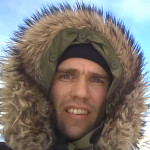


But there is hope. The Northeast Arctic cod may just be the ideal candidate for for such an investigation, as data on fishing pressure, demography and spawning locations have been meticously collected, either for scientific or commercial purposes, for up to 150 years.
Based on these data and in conjunction with state dependent optimization models, I have, together with several co-authors, presented results suggesting that intense harvest on not only alters age structure in the population, but may also lead to evolutionary change in life history strategies such as age at maturation and spawning migration.
The picture is complex, and multiple drivers are at play - many of which are still poorly understood.

From Opdal and Jørgensen (2015)
A concurrent trend, has been the increase in colour dissolved organic matter (CDOM) in freshawer lakes and rivers, observable as browner water. A less studied aspect of terrestrial greening is the effect on coastal ecosystems, to which all this brown freshwater drains. My collegue Dag L. Aksnes was early to point out the effect and coined it coastal water darkening .
In 2019, TEG, together with the AKVA group and Department of Geosiences (both at the University of Oslo), recieved funding from the RCN to develop the field further. The project A green-blue link made browner: how terrestrial climate change affects marine ecology aims to recontruct the historical (and future) CDOM flux from land to coast, investigate the ecological effects of coastal systems, and particularly estimate the influence on the timing of life-history events (phenology) from phytoplankton to fish. Please visit the project website here for more information

Participants and rough outline of the project A green-blue link made browner: how terrestrial climate change affects marine ecology (2019-2024)
(+47) 55 58 44 66
Office:
3H19
Thormøhlensgate 53B
3rd floor
Postal Address:
Department of Biological Sciences
University of Bergen
P.O. Box 7803
N-5020 Bergen
Norway